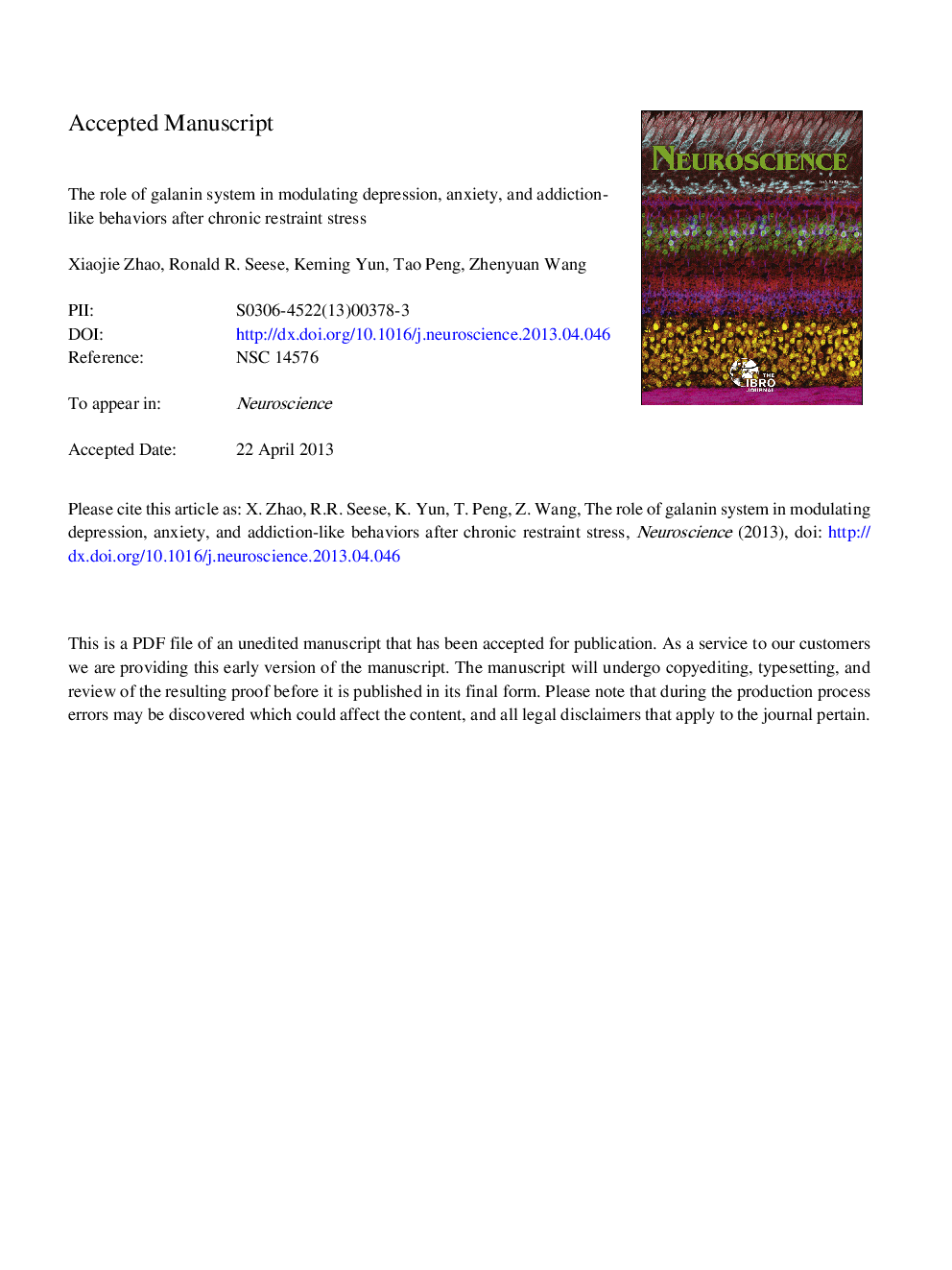| Article ID | Journal | Published Year | Pages | File Type |
|---|---|---|---|---|
| 6274572 | Neuroscience | 2013 | 40 Pages |
Abstract
There is high comorbidity between stress-related psychiatric disorders and addiction, suggesting they may share one or more common neurobiological mechanisms. Because of its role in both depressive and addictive behaviors, the galanin system is a strong candidate for such a mechanism. In this study, we tested if galanin and its receptors are involved in stress-associated behaviors and drug addiction. Mice were exposed to 21 days of chronic restraint stress (CRS); subsequently, mRNA levels of galanin, galanin receptors (GalRs), the rate-limiting enzymes for the synthesis of monoamines, and monoamine autoreceptors were measured in the nucleus accumbens by a quantitative real-time polymerase chain reaction. Moreover, we tested the effects of this stress on morphine-induced addictive behaviors. We found that CRS induced anxiety and depression-like behaviors, impaired the formation and facilitated the extinction process in morphine-induced conditioned place preference (CPP), and also blocked morphine-induced behavioral sensitization. These behavioral results were accompanied by a CRS-dependent increase in the mRNA expression of galanin, GalR1, tyrosine hydroxylase (TH), tryptophan hydroxylase 2, and 5-HT1B receptor. Interestingly, treatment with a commonly used antidepressant, fluoxetine, normalized the CRS-induced behavioral changes based on reversing the higher expression of galanin and TH while increasing the expression of GalR2 and α2A-adrenceptor. These results indicate that activating the galanin system, with corresponding changes to noradrenergic systems, following chronic stress may modulate stress-associated behaviors and opiate addiction. Our findings suggest that galanin and GalRs are worthy of further exploration as potential therapeutic targets to treat stress-related disorders and drug addiction.
Related Topics
Life Sciences
Neuroscience
Neuroscience (General)
Authors
X. Zhao, R.R. Seese, K. Yun, T. Peng, Z. Wang,
